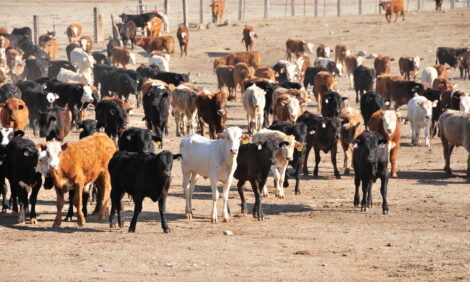



Climate Change Affects Cattle Breeding
UK - A new study on Northumberland's iconic Chillingham cattle published in the British Ecological Society's Journal of Animal Ecology shows climate change is altering when these animals breed, and fewer calves are surviving as a result.The team of ecologists lead by Dr Sarah Burthe of the Centre for Ecology & Hydrology were able to use the cattle to discover more about the impact of climate change on phenology in mammals because – encouraged by Charles Darwin – information about the cattle has been collected since 1860.
According to Dr Burthe: "Charles Darwin encouraged the owner to keep records of births, deaths and 'notable occurrences', but he couldn't have anticipated that these records could contribute to our understanding of the biology of global climate change."
Long-term datasets are crucial tools for studying climate change, yet very few exist. "The Chillingham cattle data are unique and, as far as we know, the longest mammal phenology dataset in the world. It's an amazing dataset," she says.
The Chillingham cattle are feral – previously domesticated but now kept wild and unmanaged – and have distinctive white coats, red ears and horns.
As well as being monitored for decades, the Chillingham cattle differ from most other UK mammals because they give birth throughout the year, not only during spring and summer.
Examining data for the past 60 years, they found the biggest change was the increasing number and proportion of Chillingham calves born during the winter. And when they compared winter births with UK Met Office weather data, they found warmer springs nine months earlier were responsible.
"Cattle have a nine-month gestation period. Warm springs allow vegetation to start growing earlier, providing the cattle with more nutritious plant growth, and more cows conceive earlier as a result," Dr Burthe explains.
More calves being born in the winter, however, is bad news for the herd, she says: "Winter-born calves don't do very well and are more likely to die before they reach the age of one. This suggests that the cattle are responding to climate change but this is having a negative impact on them."
The results are important because they show that even species able to breed year-round, which might be expected to cope better with environmental change, are altering the timing of their breeding schedules and these changes are having negative consequences.
The study also plugs a major gap in understanding about phenology and climate change in an important group of animals. "Feral animals are often important components of ecosystems and used as tools for managing habitat, but we know very little about how they might respond to climate change."
"Understanding the consequences of phenology change and how widespread these responses are, even in relatively flexible species such as cattle that are able to breed year-round, helps us to predict the potential magnitude of changes caused by a warming climate."
TheCattleSite News Desk


